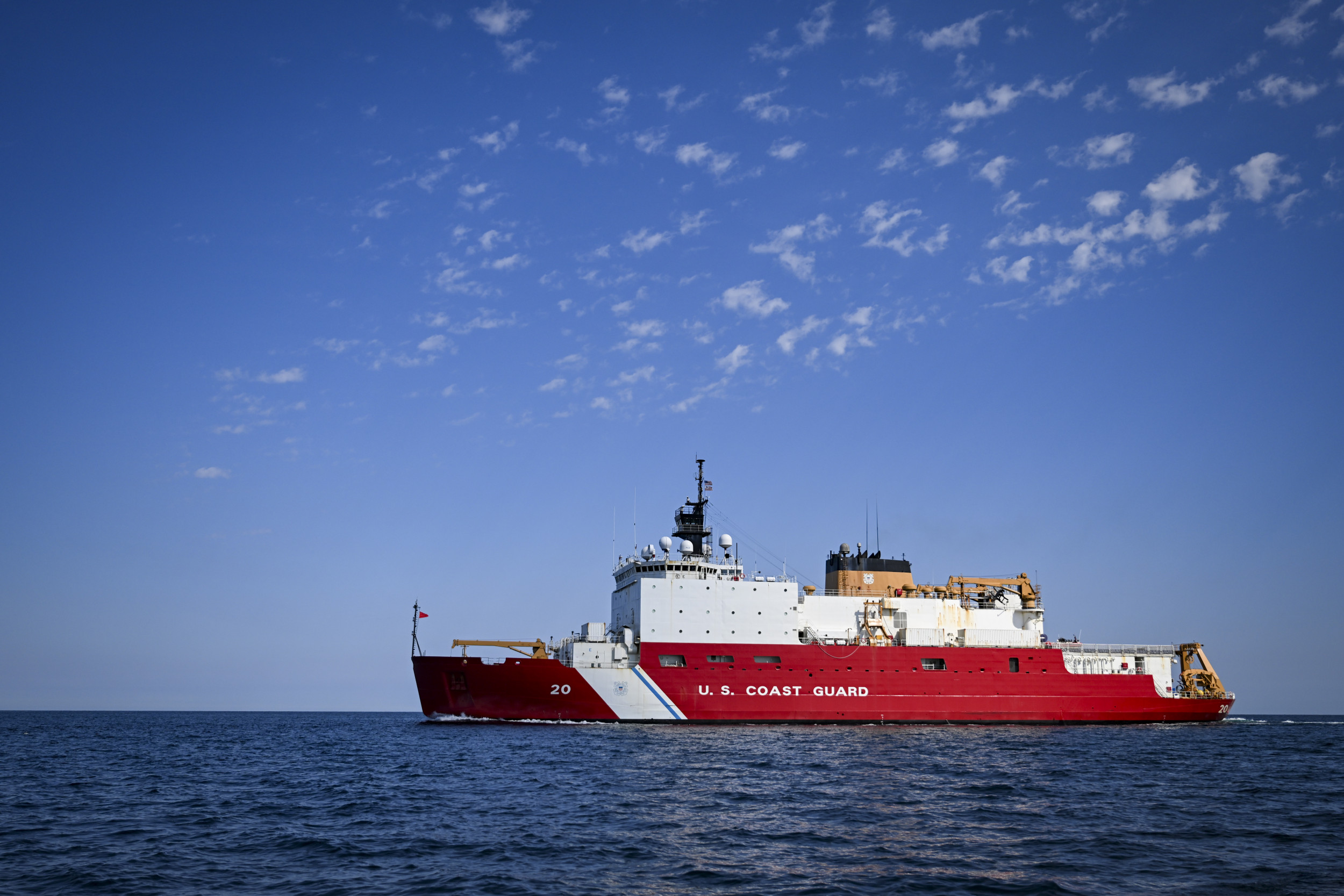
A Newsweek map shows that both the United States and China have deployed icebreakers to Arctic waters north of Alaska recently, as the two powers jostle for dominance in the region.
USCGC Healy—America’s largest and most technologically advanced icebreaker—is conducting a mission to reinforce U.S. presence in the Arctic, the U.S. Coast Guard said.
Regarding the deployment of the Chinese icebreaker Xue Long 2, the Chinese Embassy in Washington, D.C., told Newsweek that China has always conducted normal maritime activities in accordance with international law.
Why It Matters
China has claimed the status of a “near-Arctic state” and a stakeholder in Arctic affairs. In recent years, the East Asian power has gradually expanded its Arctic presence, including deploying icebreakers and conducting scientific research with potential military applications.
Alarmed by China’s activities in the Arctic—which include its cooperation with Russia—the Pentagon has updated its Arctic strategy, calling for a greater military presence, enhanced intelligence capabilities and closer cooperation with allies to address these challenges.
What To Know
Using open-source data, the Healy was tracked departing Dutch Harbor—a key fishing port on Alaska‘s Amaknak Island—on July 13. Four days later, it transited the Bering Strait, which separates Alaska from Russia’s Far East, during its northbound voyage.
A Newsweek map shows that the Xue Long 2—China’s first domestically built icebreaker—passed through the waterway a day after the Healy‘s transit.
As of July 26, both vessels were tracked underway in Arctic waters on the U.S. Extended Continental Shelf (ECS)—an area of continental shelf extending beyond 230 miles from America’s coastline, where the U.S. has exclusive rights to conserve and manage resources.
The Healy was also observed sailing in the Chukchi Sea—north of the Bering Strait—and the Bering Sea on July 5 and July 9, respectively, according to photos released by the U.S. Coast Guard.
The vessel departed its home port of Seattle, Washington, on June 19 to conduct what the U.S. Coast Guard described as “high-latitude science and research missions” in the Arctic.
In a Facebook post on Monday, the U.S. Coast Guard said the Healy recently began its annual Arctic deployment, aimed at conducting “vital research” on sea ice and ocean movement.
Petty Officer 1st Class Steve Strohmaier/U.S. Coast Guard
The Newsweek map also shows that the Xue Long 2 remained outside the U.S. Exclusive Economic Zone (EEZ) around Alaska—extending up to 230 miles from the coastline—during its transit, except for a portion of its voyage in the Chukchi Sea prior to reaching the U.S. ECS.
What People Are Saying
The U.S. Coast Guard wrote in a Facebook post on Monday: “For over 234 years, the American people have relied on the Coast Guard to safeguard our national security, sovereignty, and economic prosperity. Through historic investment in the Coast Guard, we are expanding our icebreaker fleet to ensure American access, security, and leadership in the Arctic.”
The Chinese Embassy in Washington, D.C., told Newsweek on Tuesday: “China has always conducted normal maritime activities in relevant waters in accordance with international law, including the United Nations Convention on the Law of the Sea. We hope the parties concerned will view this matter in a proper manner, without undue suspicion or groundless speculation.”
What Happens Next
It remains to be seen whether the U.S. will further strengthen its presence in the Arctic amid China’s growing activities, with climate change having made the region more accessible.
